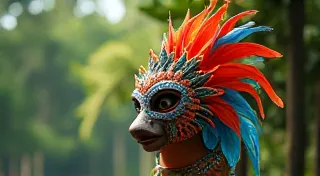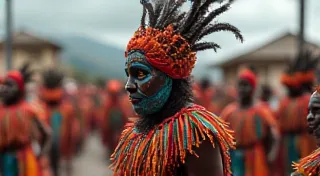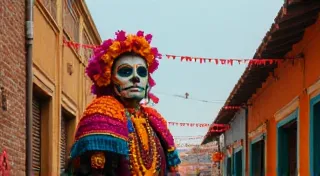Masks of the Tlingit People: Raven Tales and Spirit Connections
The Tlingit people, an Indigenous group inhabiting the southeastern coast of Alaska and western Canada, possess a rich and vibrant tradition of mask making. These masks are far more than mere decorative objects; they are vital components of ceremonies, storytelling, and spiritual connection to the ancestors and the natural world. This article explores the artistry, symbolism, and significance of Tlingit masks, focusing on the prominent role of raven stories and their connection to Tlingit cultural heritage.
The Spiritual Significance of Masks
For the Tlingit, the creation and use of masks is deeply intertwined with their spiritual beliefs. Masks are often believed to be vessels for spirits, allowing them to temporarily inhabit the physical world during ceremonies. The carver, a respected member of the community and often guided by spiritual insight, carefully shapes the wood, often using cedar, to embody these spirits. The process itself is considered sacred and imbued with power. The masks are not ‘owned’ in the Western sense; they are held in trust for the clan and used for the benefit of the community.
Masks are integral to various ceremonies, including potlatch feasts (celebrating important events like births, marriages, and deaths), winter dances (K̲ú.x̱’ut diḵ̱), and healing rituals. The wearer, often a member of a specific clan, embodies the spirit of the mask and acts as a conduit between the spiritual realm and the human world.
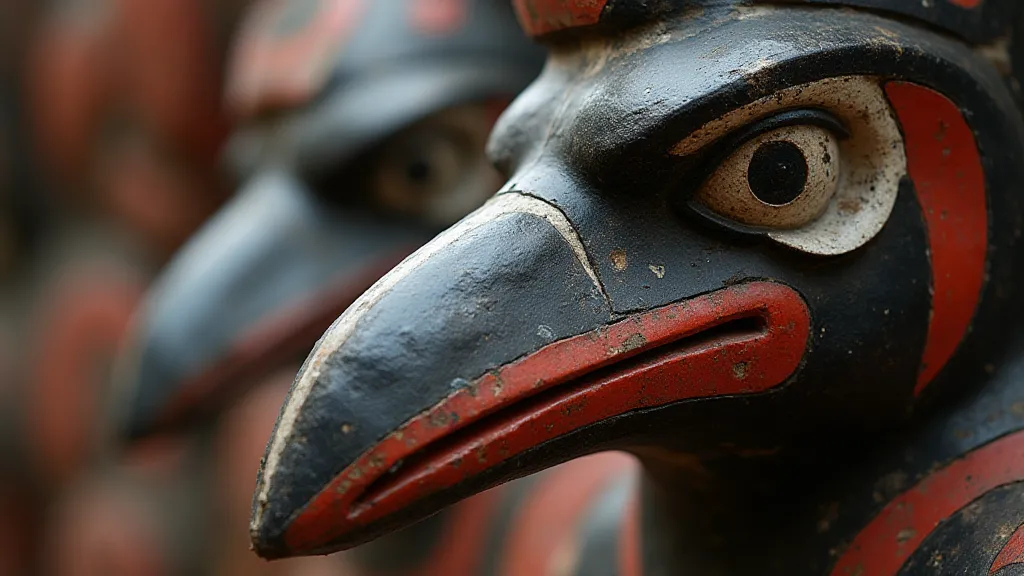
The Raven: A Central Figure in Tlingit Masks
The raven (Yéi) holds a crucial role in Tlingit mythology. He is a trickster, a creator, and a cultural hero who brought light and fire to humanity. Consequently, raven masks are among the most common and revered. These masks depict the raven in various forms, from a playful trickster to a wise and powerful being. The expressions carved into the mask are often intended to reflect the raven's cunning and mischievous nature.
Stories featuring the raven are passed down through generations, and masks serve as visual representations of these narratives. They vividly bring the tales to life for those who witness the performances. The use of color is significant; black typically represents transformation and magic, while red symbolizes life and power. This practice of employing masks to embody narratives is not unique to the Tlingit; cultures around the globe utilize this powerful medium to convey stories and connect with the spirit world, as exemplified by the masks of West Africa, which also serve vital roles in ritual and storytelling.
Materials and Techniques
Traditionally, Tlingit masks are carved from red cedar, a readily available and easily workable wood in the Pacific Northwest. The wood is meticulously carved using tools made from stone, bone, and, later, metal. The surface of the mask is then adorned with paint derived from natural pigments, such as ochre for yellow and red, and charcoal for black. Animal hair, feathers, and shells are often incorporated to add texture and detail.
The techniques used in carving and painting have been passed down through families and clans, preserving the knowledge and skills required to create these powerful objects. Consider the intricate details applied to these creations; the cultural importance assigned to the finished product highlights a universal human drive to express cultural identity through art, a concept that resonates strongly with artistic traditions found elsewhere, like the art of Haitian mask making, where masks are also critical for Vodou ceremonies and expressing cultural identity.
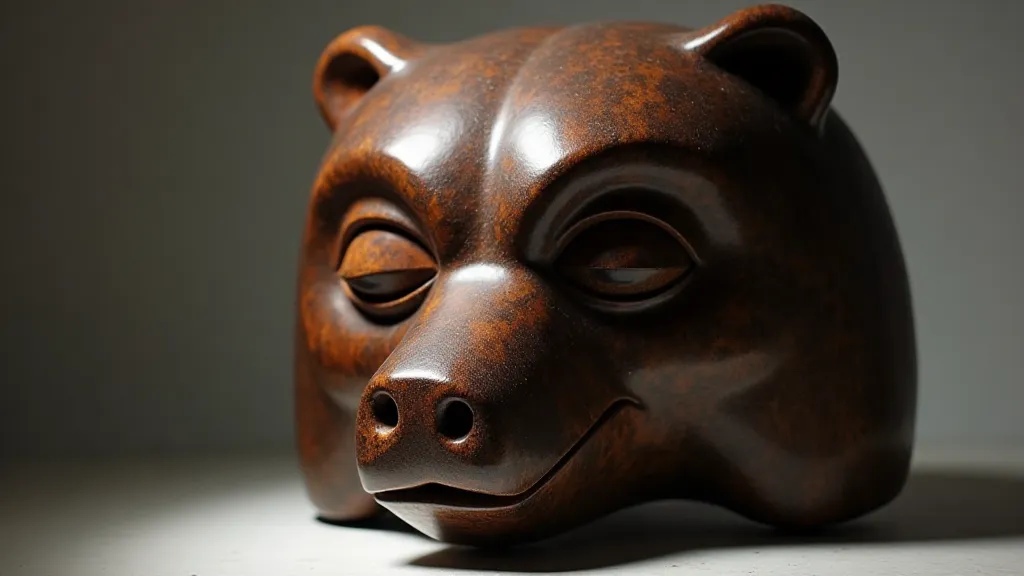
Types of Tlingit Masks
A diverse range of Tlingit masks exists, each serving a specific purpose within the community. Common types include:
- K̲ło.x masks: These represent spirits of deceased individuals and are used in memorial ceremonies.
- Copper masks: These elaborate masks are made of copper and represent wealth and prestige.
- Animal masks: Representing various animals such as bear, wolf, eagle, and seal, these masks are used in dances and storytelling.
- Human Masks: Used in certain ceremonies, these masks represent important ancestors or clan members.
Beyond these common classifications, there are countless variations and regional styles, reflecting the rich tapestry of Tlingit culture. The deep connection between mask making and remembrance also echoes across cultures, mirroring the profound symbolism embedded in the Mexican Day of the Dead masks, where vibrant imagery serves to celebrate life and remembrance of those who have passed.
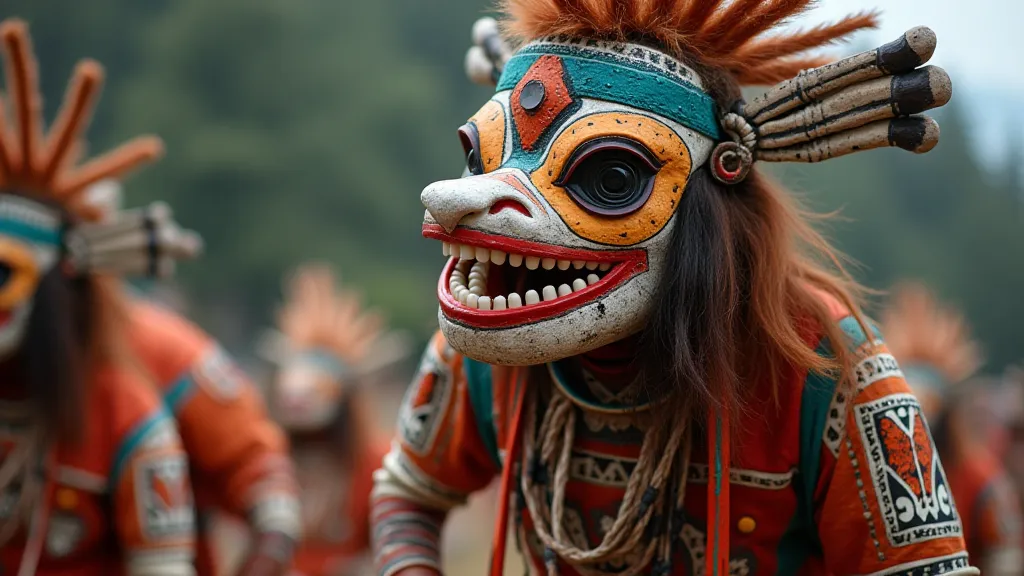
The Creation Process: More Than Just Craftsmanship
The creation of a Tlingit mask isn't simply a matter of carving wood and applying paint; it is a deeply spiritual undertaking. The carver undertakes a sacred duty, guided by ancestral knowledge and sometimes experiencing visions that dictate the mask’s final form. This connection between artistic creation and a larger spiritual narrative resonates profoundly. The very act of shaping the mask, imbuing it with power and meaning, demonstrates a deeper understanding of how we use symbolic representations to articulate intangible beliefs. This is an area explored and deeply ingrained in cultures across the globe, and understanding this process expands our perspective on art as a reflection of shared human experiences and narratives. The echoes of this intention can be found across various cultures where masks are employed for rituals and symbolic representation – a concept examined further within explorations of how masks preserve dissolving narratives.
Modern Challenges and Preservation Efforts
Like many Indigenous traditions, Tlingit mask making faces modern challenges, including the pressures of assimilation, economic hardship, and the limited availability of traditional materials. While red cedar remains relatively accessible, the knowledge and skills required to carve and paint these masks are increasingly vulnerable. However, the Tlingit community is actively working to preserve this invaluable cultural heritage. Apprenticeship programs are being established to pass down traditional techniques to younger generations. Educational initiatives are raising awareness within the community and beyond. Perhaps most importantly, efforts are underway to repatriate stolen artifacts from museums and private collections, returning them to their rightful owners and ensuring that these masks are accessible for ceremonial use and cultural preservation.
Conclusion
The masks of the Tlingit people are more than just beautiful works of art; they are living embodiments of cultural identity, spiritual connection, and ancestral wisdom. Their continued creation and use represents a powerful testament to the resilience of the Tlingit people and their commitment to preserving their unique heritage for generations to come. By understanding the artistry, symbolism, and significance of these masks, we gain a deeper appreciation for the richness and diversity of Indigenous cultures and the enduring power of art to connect us to our past and inspire our future.

